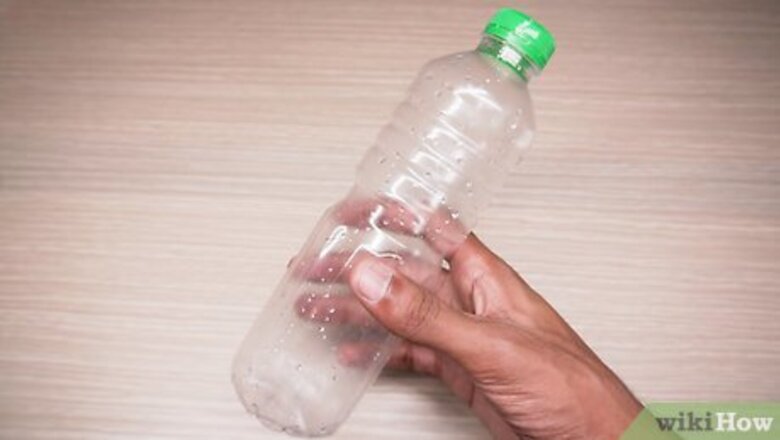
views
X
Research source
Participants try to flip a plastic bottle ⅓ full of water into the air and make it land upright. It sounds simpler than it is, and only skilled flippers have what it takes to land it perfectly every time. Are you up to the challenge? We’ll show you how to optimize your bottle and flip it so that it lands consistently. We’ll also give you ideas for sick trick shots to try once you mastered the art of bottle flipping.
- Empty a clear, 16.9 fl oz (500 mL) plastic bottle, then fill it ¼-⅓ of the way full with water and replace the cap.
- Hold the bottle by the neck using just your fingertips. Then, swing it forward with your wrist.
- Let go of the bottle when the bottom is above your wrist, and watch it flip through the air until it lands upright. Practice flipping until you can land it every time.
Optimizing Your Bottle
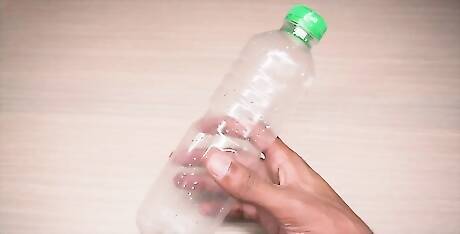
Empty out a clear 16.9 fl oz (500 mL) plastic bottle. Any transparent, plastic 16.9 fl oz (500 mL) bottle of water or soda from a convenience store will do, but find one that’s clear so that you can see the water level in the bottle. Hourglass-shaped bottles, with narrow middles, are often preferred by pros. Drink the beverage if you can, but otherwise pour it down the sink to empty the bottle. Avoid buying cola or root beer bottles that are dark brown in color, as you won’t be able to see the water level well enough.
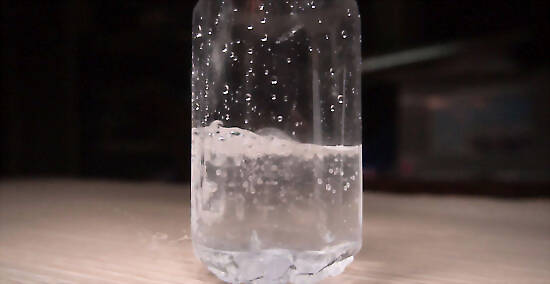
Fill the bottle ¼-⅓ full with water. Use a faucet to fill the empty bottle ¼-⅓ full of water, but no more! Adding too much water won’t allow the bottle to land stable on its bottom. Too little water will cause the bottle to not weigh enough and be floaty in the air. Then, screw the cap on tight to prevent any liquid from spilling while you flip it. If you want, add 2-3 drops of food coloring to the water once it’s in the bottle to give your flipper some flashy flair.
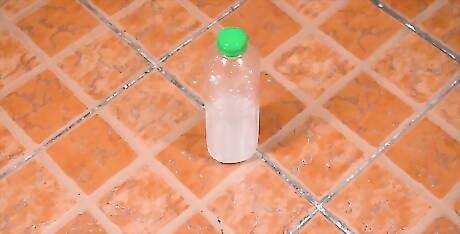
Tip the bottle on a flat surface to check its balance. The surface that you flip your bottle onto needs to be flat so the bottle can land evenly. Make sure the table or desk you use isn’t wobbly or broken in any way. Then, use a finger to tip the bottle a bit. Let go, and see if the bottle rocks back onto its base. This lets you know about how much wiggle room you have to land the bottle upright. The farther you can tip it without it falling over, the easier the bottle will be to land. If you want to use the floor instead, go ahead! Just be sure it’s hardwood, tile, or another hard surface, to make your first flips a bit easier.
Flipping Your Water Bottle
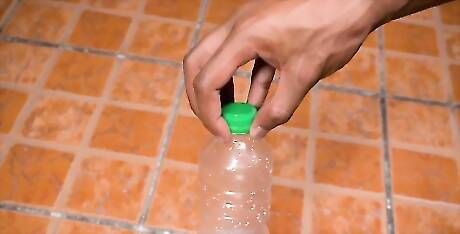
Grip the neck of the bottle with the tips of your fingers. Place your fingertips and thumb around the top of the bottle’s neck, just under the cap, so that your hand is hovering around, but not touching, the cap. Grip it securely but loosely so that when you flip it, the bottom of the bottle goes up into the air. Your hand will look a bit like a claw if it’s in the right holding position.

Flick your wrist up and away from you while gripping the bottle. With a loose wrist, swing the bottle slightly back toward you, then smoothly away. The bottom of the bottle will go up and out in a circular motion away from you. This swinging motion keeps the water in the bottom of the bottle, even as it spins, to help it balance. Avoid moving your arm too much when flipping the bottle. The bulk of the movement comes from your wrist. Keep the bottle’s path aligned straight down your arm, so that it flips where your arm is pointing.
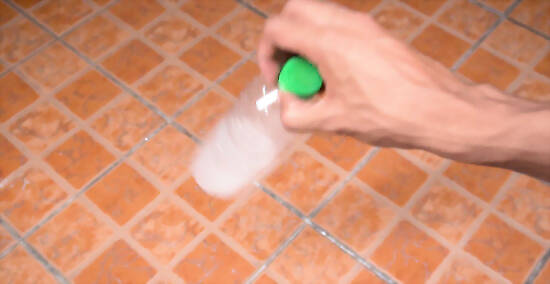
Let go of the bottle when its bottom is in the air. When your wrist is as high as it can go, the bottle will be almost upside-down and the water will still be in the bottom. Let go of the bottle at this point, so that the weight of the water carries it through a full mid-air flip on its way to the table or floor. If you’re bottle feels a bit floaty or light, add 0.25 c (59 mL) of water at a time until it feels hefty. If it feels too heavy, or has a weighty bounce when it lands, pour some water out until you can feel the weight concentrate in the bottom when you swing it.
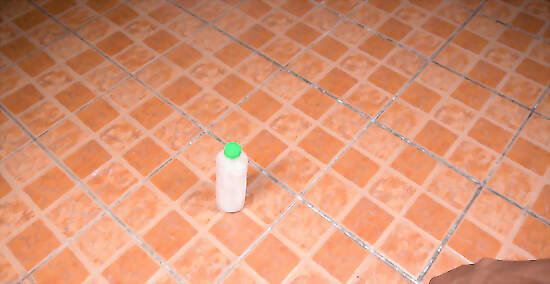
Practice flipping the bottle until it consistently lands upright. Like any skill, practice makes perfect. When you do land it, take note of how how the bottle felt as it left your hand, and at what point you let it go, then try to recreate that feeling with each toss to build up muscle memory that lets you land it every time. If your bottle doesn’t make at least one full flip in the air, let go of it later. If it flips too much, let go of it sooner. Also, adjust your target surface to be farther or closer to you. If your bottle spins too much, having a farther target gives it more air time to complete those spins.
Doing Trick Shots
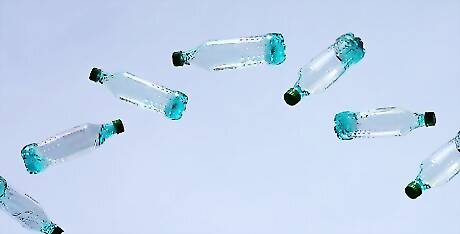
Flip the bottle 2 or 3 times in the air. Landing a bottle after a single flip is one thing, but can you land it after 2 flips? 3? See how many times you can spin that bottle in the air and still have it land upright. Then, for an extreme challenge, see if you can get the bottle to make 1.5 spins, or even half a spin—that’s right, you heard us! We mean, see if you can land the bottle on its cap. It takes some precision, but it’s possible. To alter the bottle’s spin, alter the flick of your wrist. A more forceful flick will make it spin faster, doing more flips, and a softer flick will make the bottle spin slower, meaning fewer flips.
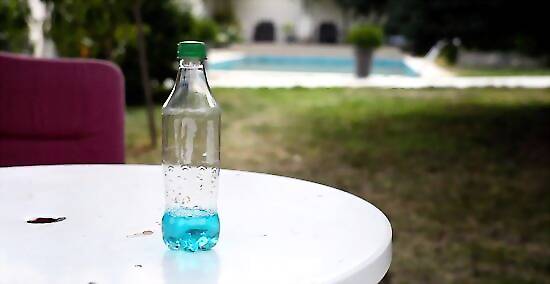
Land the bottle on a raised platform or other tricky surface. Once you’ve mastered flipping a bottle onto a table or floor in front of you, it’s time to get a little flashier. Find a raised surface higher than your head, like a cabinet, dresser, or even a basketball hoop, and see if you can flip the bottle and land it up high. When you have that down, see if you can flip it over and behind your head! You’ll need a little more force to the throw, so put more of your arm into it and exaggerate the flick of your wrist. Also try landing the bottle on small or precarious surfaces, like the top of an open door, or even on top of another bottle.
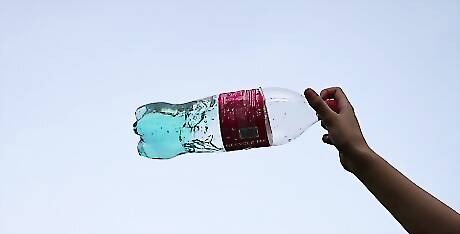
Flip different-sized bottles to mix up your technique. Now that you’ve gotten the bottle flip down with your first bottle, really push your skills by using a totally different bottle. Different bottles will require different techniques, and some are easier to land than others. For example, can you land a big, 2 L (0.53 US gal) soda bottle? How about a skinnier bottle with a smaller base?


















Comments
0 comment